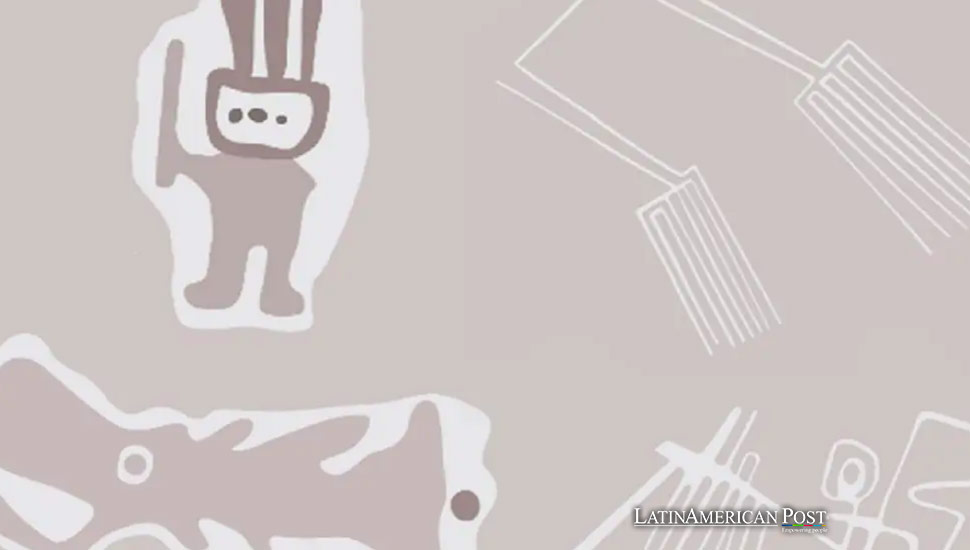AI-Driven Discovery Unveils Nazca Geoglyphs in Peru

Japanese archaeologists from Yamagata University asw used artificial intelligence to discover four new geoglyphs in Peru’s Nazca desert. This innovative approach significantly accelerates the identification of these ancient, mysterious carvings.
Peru’s Nazca desert, a vast and enigmatic expanse on the country’s southern Pacific coast, has long intrigued scientists and historians. This ancient landscape, home to the famous Nazca Lines, continues to reveal its secrets thanks to cutting-edge technology. Recently, a team of Japanese archaeologists from Yamagata University announced the discovery of four new geoglyphs, unveiled through artificial intelligence (AI) and Deep Learning (DL).
Vast and Mysterious Nazca Lines
The Nazca Lines, a collection of pre-Columbian geoglyphs, span an impressive 1,000 square kilometers. These lines form around 300 figures depicting various animals, plants, and geometric shapes. Recognized as a UNESCO World Heritage Site in 1994, the Nazca Lines have sparked numerous hypotheses about their origins and purposes. Scholars have speculated that they might have served astronomical functions, acted as religious offerings, or even marked extraterrestrial activity. Despite these theories, the true meaning behind the Nazca Lines remains a mystery.
The recent breakthroughs by Yamagata University’s team signify a monumental step in the ongoing exploration of this historical site. By leveraging Deep Learning technology, researchers can identify geoglyphs faster and more efficiently than traditional methods. This new approach was detailed in their study, “Accelerating the discovery of new Nasca geoglyphs using deep learning,” published in the Journal of Archaeological Science.
The study highlights how Deep Learning, a subset of machine learning, has been instrumental in analyzing excavated objects’ iconography, text, and writing. Masato Sakai, a professor at Yamagata University who led the research, explained that their method allows for discovering previously elusive targets by enabling DL to learn image representations with improved generalization and performance. This technological advancement has revolutionized the field of archaeology, making the identification process approximately 21 times faster than with the naked eye.
Newly Discovered Geoglyphs
The newly discovered geoglyphs include a humanoid figure, a fish, and a bird with two legs. The humanoid geoglyph, depicted holding a club in its right hand, measures five meters long. The fish geoglyph, shown with its mouth wide open, is 19 meters long, while the bird geoglyph spans 17 meters, with each leg measuring 78 meters. These figures, hidden in plain sight for centuries, were revealed through meticulous AI analysis.
Since 2004, Yamagata University has been at the forefront of exploring the Nazca desert, employing various advanced techniques such as satellite imagery, aerial photography, LiDAR (Light Detection and Ranging) technology, and drone photography. These methods have progressively unveiled previously hidden geoglyphs. In December 2022, for instance, Yamagata researchers identified 168 new glyphs that had not been registered before.
Cultural and Historical Significance
The implications of these discoveries are profound, extending beyond mere academic interest. They provide a deeper understanding of the Nazca culture, which flourished in Peru between 200 BCE and 600 CE. The geoglyphs are believed to be linked to their religious and social practices, offering insights into their worldview and technological capabilities.
Peru, rich in historical and cultural heritage, is a critical player in Latin American archaeology. The Nazca Lines, along with other significant sites like Machu Picchu and the ruins of Chan Chan, position Peru as a focal point for understanding pre-Columbian civilizations. The use of modern technology in uncovering these ancient wonders underscores the dynamic intersection of past and present in Latin American history.
The application of AI in archaeology exemplifies a new paradigm in research methodologies. By integrating fieldwork with sophisticated technology, scientists can uncover hidden patterns and artifacts that were previously inaccessible. This approach enhances the efficiency of archaeological investigations and opens new avenues for interpreting ancient cultures.
The Nazca Lines were first discovered in 1937, and ever since, they have captivated the imagination of both the public and scholars. Theories about their purpose abound, ranging from astronomical tools to religious symbols and even the far-fetched idea of alien intervention. Despite these varying theories, the precision with which these lines were carved into the desert soil remains a testament to the ingenuity of the Nazca people.
The discovery of new geoglyphs through AI is a testament to the continuous evolution of archaeological practices. It highlights how modern technology can bridge the gap between the ancient and the contemporary, providing more precise insights into the lives of our ancestors. This fusion of AI and traditional archaeology represents a significant leap forward in our quest to unravel the mysteries of the past.
Broader Latin American Context
Such discoveries in the broader Latin American context enhance our understanding of the region’s rich cultural tapestry. With its diverse indigenous cultures and historical milestones, Latin America offers a vast field for archaeological exploration. The advancements in Peru serve as a model for other countries in the region, demonstrating how technology can aid in preserving and interpreting cultural heritage.
As we look to the future, the integration of AI in archaeological research promises even more groundbreaking discoveries. The Nazca Lines, with their enigmatic allure, are just the beginning. Other sites across Latin America and the world stand to benefit from these technological advancements, potentially rewriting the narratives of human history.
Also read: Peru’s Military Vehicle Plant Boosts Economic and Defense Sectors
In conclusion, discovering new geoglyphs in Peru’s Nazca desert, facilitated by AI and Deep Learning, marks a significant milestone in archaeology. It showcases the power of modern technology in uncovering ancient mysteries and highlights the rich cultural heritage of Latin America. As researchers continue to explore and interpret these findings, the story of the Nazca Lines and the people who created them becomes ever more vivid, bridging the gap between the ancient world and our contemporary understanding.





